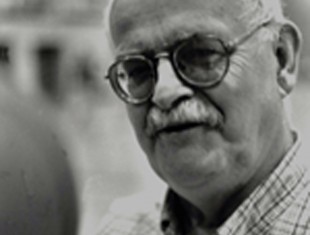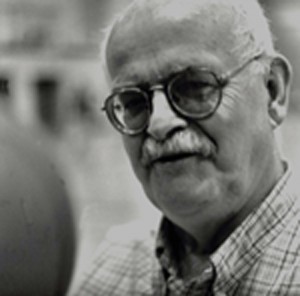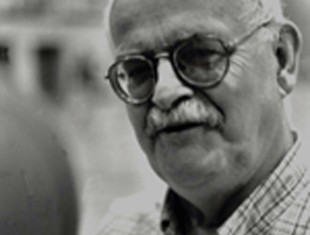This has been nagging me for 40 years. Now it’s dragging me down and I think it’s about time did something about it. So for however long it takes me, I’m going to write about my youth.
When I first started writing sports for the old Bremerton Sun – my first day was Feb. 2,1970 – I already had been thinking about doing a story on what I consider my idyllic childhood, circa mid-1940s to May 21, 1953. It didn’t take me long to come up with a title ‑ Summer of My Youth.
Since I can’t especially log each year separately, those eight years or so are going to be lumped, stuffed and crammed into one year, into the Summer of My Youth. There may be inaccuracies, half-truths and downright fiction. But that’s all right. I just want to get it down and ease the pressure on my mind.
A couple times in the following years I started writing about it only to get distracted and then stopped. So it’s about time that I start and finish it, if not for your enjoyment but for showing what life was like back then. And, yes, to also unload this stuff from my busy mind and give me some respite from it.
My first recollection was during World War II when I was about four years old and with some neighborhood friends heeded the call to collect scrap Iron for the war effort. Tugging my little red wagon around our neighborhood we gathered what we could find and I brought it home for my dad to look over.
Us young boys, andthere were four of us, didn’t really know iron from tin, but we kept at it andwere proud to be doing something for the effort, even if it was not lauded ornoticed by others.
At this time, we neighborhood kids also learned how to put holes is the maple trees and insert a sprout that would drain the precious maple syrup into tin cans hooked to the tree by a nail. Even then I worried about the tree, us putting nails into it. I thought I would not like that if somebody did that to me.
But we did that, and would go back to those trees every few hours to see what had been collected. It always seemed a slow process, which is likely why maple sugar is so expensive.I also recall that a specific so-called friend used to often steal the syrup before I could get to it. That “friend” would be a protagonist for all my childhood, for reasons I’m not quite sure why to this day.
Mom used to do everything, from cooking three meals a day to canning everything my dad and us kids, and there were five of us, could find. My father also grew a garden and raised pigs, turkeys, chickens, and hunted deer. So there was plenty for my mom to can, from tomatoes, corn, beans, blackberries, raspberries, and strawberries to making fudge – brown and chocolate – maple sugar, popcorn, and pies. There were plenty of pies, from the yum-yum apple to the dreaded mincemeat.
I learned early frommy mom to fry bologna for sandwiches. It was and is the poor man’s steaksandwich.
Boy, I hated mincemeat. I don’t even know what it is to this day, except that even our dog Peanuts should not have been forced to eat it. Yet, even I ate mincemeat pies,by small bites at a slow pace. A very, very slow pace. Then I would go upstairs to my bedroom overlooking the porch roof and the looming two-story garage where my dad stored some of his many tools and where when he was lucky and shot a deer in season they would be hung for the awful ritual of skinning and butchering and try not to throw up.
During late spring through the summer the kitchen would be steaming hot with my poor mother baking in the heat while canning day after tough day. I never heard her complain, although I stayed away from the steam and the heat as much as possible. It was hot enough in summers in our little corner of New York State as it was.
My mom was a quiet person who did not complain, anyway. She just did what was expected of mothers,took care of us children – we were her first, second and third priority – and the house and the cooking, and if she had spare time she sat down and listen to the radio (we did not have TV yet) and do some crocheting. I don’t know what she made, but she made them.
Dad worked in Olean, N.Y, about six miles away down Rte 17 from our house on the outskirts of Portville, which was a little quaint village that had New England stamped allover it, especially the colonial-style houses with wrap-around porches.
We had one of them. Our porch ran from the entire front of the house, all the way around the side facing the open lawn. Our two-story house sat less than 10 feet from Rte 17.Maple and some Dutch Elm trees fronted our house, as they did for all the houses lined along the highway into Portville and beyond.
Those trees were wonderful, although I’m sad to report that about 50 years ago those Dutch Elm were killed with a disease that swept through the county (Cattaraugus). The Dutch Elm Disease started in Europe in 1910 and was thought to reach the United States through the arrival of Bark Beetles with wood for the Ohio furniture business in the late 1920s. They arrived in my little town in the 1960s, several years after I had moved out west to Ferndale, Wa.
It’s a terrible shame we have lost the Dutch Elm because they were so beautiful.
My dad grew up on afarm in Allegheny, N.Y., about six miles north of Olean (Portville is six milessouth) and I use to run around the farm while my older brothers and dad helpedour grandfather – Robert L Mosher – with the harvest and milking. At somepoint, maybe when I was around six I was chipping in with the work, eitherdriving the tractor with a trailer on the back that would be loaded with balesof hay. My brothers did the loading, although I would on occasion be asked tohelp out with that, too.
I used to get yelled at to go faster with the lifting of those bales. I had a heck of a time getting used to those steel hooks that you slapped into each end of a bale, making it easier to lift on to the trailer. As I think about it, I never did quite get the hang of those steel hooks and went back to grabbing bales by the strings that held the hay tight. I think, though, the bales weighed more then I did, although that was no excuse for not keeping up.
Once my grandfather asked me to lift one of those stainless milking cans, which was full of milk, into the milk house.
“Put it over there,”I recall him saying.
The milk house was built over a cold-running creek and had no floor. You opened the door and lifted those full milk cans into the creek to keep the milk from souring until the wholesale truck guy show up to take them to town and do whatever they did with them.
My grandfather spoke very little. I may have heard him speak two or three times. This was one of them. He was just joking around with me since he knew and I knew there was no way in God’s Heaven I could lift one of those cans. But I tried, and in a strange way I was happy that he asked me. It gave me some sort of connection with a man I never did figure out before he died in 1960.



